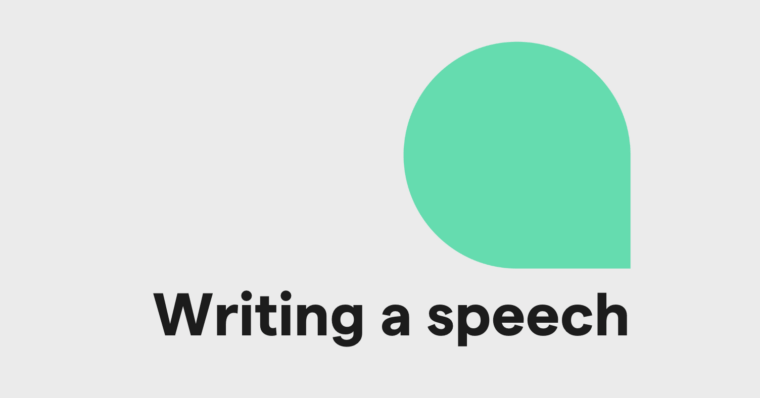
You’ve done it. You’ve refined your introduction and your thesis. You’ve spent time researching and proving all of your supporting arguments. You’re slowly approaching the finish line of your essay and suddenly freeze up because—that’s right—it’s time to write the conclusion.
Before we dive into the details, here’s a basic outline of how to write a conclusion:
- Restate your thesis: remind readers of your main point
- Reiterate your supporting points: remind readers of your evidence or arguments
- Wrap everything up by tying it all together
- Write a clincher: with the last sentence, leave your reader with something to think about
For many, the conclusion is the most dreaded part of essay writing. Condensing all the points you’ve analyzed in a tidy little package is certainly easier said than done. How can you make a good final impression while emphasizing the significance of your findings?
Table of contents
5 key details for writing a conclusion
What your conclusion should not include
How to write a conclusion
Learning how to write a conclusion for an essay doesn’t need to feel like climbing Everest. It is wholly possible to tie everything together while considering the broader issues and implications of your argument. You just need the right strategy.
What do you want to leave your readers with? Perhaps you want to end with a quotation that adds texture to your discussion. Or, perhaps you want to set your argument into a different, perhaps larger context.
An effective conclusion paragraph should ultimately suggest to your reader that you’ve accomplished what you set out to prove.
5 key details for writing a conclusion
1 Restate your thesis
As you set out to write your conclusion and end your essay on an insightful note, you’ll want to start by restating your thesis. Since the thesis is the central idea of your entire essay, it’s wise to remind the reader of the purpose of your paper.
Once you’ve restated your thesis (in a way that’s paraphrased, of course, and offers a fresh understanding), the next step is to reiterate your supporting points.
2 Reiterate supporting points
Extract all of the “main points” from each of your supporting paragraphs or individual arguments in the essay. Then, find a way to wrap up these points in a way that demonstrates the importance of the ideas.
Depending on the length of your essay, knowing how to write a good conclusion is somewhat intuitive—you don’t want to simply summarize what you wrote. Rather, the conclusion should convey a sense of closure alongside the larger meaning and lingering possibilities of the topic.
3 Ask yourself: “So what?”
At some point in your life, a teacher has probably told you that the end of an essay should answer the question “So what?” or “Why does it matter?” This advice holds true. It’s helpful to ask yourself this question at the start of drafting your thesis and come back to it throughout, as it can keep you in tune with the essay’s purpose. Then, at your conclusion, you won’t be left searching for something to say.
4 Add perspective
If you’ve come across a fantastic quote in your research that didn’t quite make it into the essay, the conclusion is a great spot for it. Including a quote from one of your primary or secondary sources can frame your thesis or final thoughts in a different light. This can add specificity and texture to your overall argument.
For example, if you’ve written an essay about J.D. Salinger’s Catcher in the Rye, you can think about using a quote from the book itself or from a critic or scholar who complicates your main point. If your thesis is about Salinger’s desire to preserve childhood innocence, ending with a biographer’s statement about Salinger’s attitude toward his own youth might be illuminating for readers. If you decide to amplify your conclusion paragraph in this way, make sure the secondary material adds (and not detracts) from the points you already made. After all, you want to have the last word!
5 Consider the clincher
At the very end of the essay comes your closing sentence or clincher. As you think about how to write a good conclusion, the clincher must be top of mind. What can you say to propel the reader to a new view on the subject? This final sentence needs to help readers feel a sense of closure. It should also end on a positive note, so your audience feels glad they read your paper and that they learned something worthwhile.
What your conclusion should not include
There are a few things that you should definitely strive to avoid when writing your conclusion paragraph. These elements will only cheapen your overall argument and belabor the obvious.
Here are several conclusion mishaps to consider:
- Avoid phrases like “in summary,” “in conclusion,” or “to sum up.” Readers know they’re at the end of the essay and don’t need a signpost.
- Don’t simply summarize what’s come before. For a short essay, you certainly don’t need to reiterate all of your supporting arguments. Readers will know if you just copied and pasted from elsewhere.
- Avoid introducing brand new ideas or evidence. This will only confuse readers and sap force from your arguments. If there’s a really profound point that you’ve reached in your conclusion and want to include, try moving it to one of your supporting paragraphs.
Whereas your introduction acts as a bridge that transfers your readers from their own lives into the “space” of your argument or analysis, your conclusion should help readers transition back to their daily lives.
By following this useful roadmap, you can feel confident that you know how to write a good conclusion that leaves readers with a solution, a call to action, or a powerful insight for further study.






